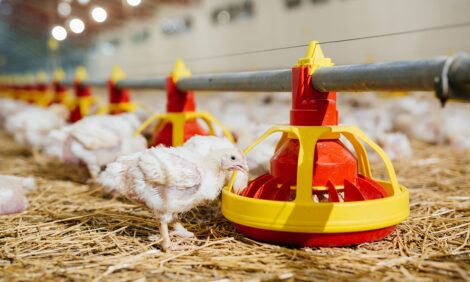



Effects of Different Infrared Beak Treatment Protocols on Chicken Welfare and Physiology
Researchers from West Lafayette in the US showed that infrared equipment for beak trimming can be adjusted to optimise pullet performance whilst also allowing birds to exhibit natural behaviour.Infrared beak trimming provides an alternative to conventional trimming, purporting to provide a welfare-friendly means of trimming, according to R.L. Dennis of USDA-ARS and H.W. Cheng of Purdue University, both located in West Lafayette, Indiana, US.
In their paper published in Poultry Science recently, they explain that the infrared system can be adjusted to use multiple plate and power settings. In their latest study, they used two different plate sizes (27/23C, less severe; 25/23C, more severe) with each of three power settings: high (52; H), moderate (48; M) and low (44; L). The birds, along with conventionally (hot blade; HB) trimmed birds, were maintained in an industry egg-laying facility.
Physiological and behavioural measures were taken at five, 10, 20 and 30 weeks.
All birds followed a similar growth curve; birds from the 27/23C (M) protocol were the heaviest across all ages and 25/23C (L) birds were the lightest.
Upper and lower beak growth curves showed birds trimmed with 25/23C protocols had shorter upper and lower beaks than with 27/23C protocols or HB. Birds trimmed using 27/23 (L) and (M) had consistently longer upper and lower mandibles.
Feed wasted was greatest in HB and 27/23C birds and tended to be reduced in 27/23 (M) and 25/23 (M) and (H) birds (P<0.10).
Beak-related behaviour – eating, drinking and pecking – were measured to observe the effects of trimming protocol on beak usage, which could indicate beak pain or morphological changes that inhibit normal behaviour. Walking behaviour was also measured to assess overall activity.
Behavioural analysis revealed that compared with HB-trimmed birds, those of 27/23C protocols walked and drank more at a young age.
At five and 10 weeks of age, a test feather was attached to the cage and pecking at as well as the damage score of the feather were determined. Birds from 27/23C (L) and (M) protocols pecked significantly more at the feather than HB, whereas HB and 25/23C (H) birds had the highest damage score.
The results from this study suggest that infrared protocols can be optimised for superior productivity as well as animal well-being, concluded Dennis and Cheng.
Reference
Dennis R.L. and H.W. Cheng. 2012. Effects of different infrared beak treatment protocols on chicken welfare and physiology. Poult. Sci., 91(7): 1499-1505. doi: 10.3382/ps.2011-01651
Further ReadingYou can view the full report (fee payable) by clicking here. |
September 2012








